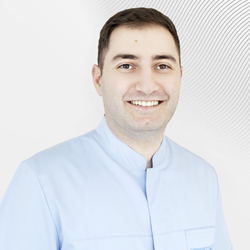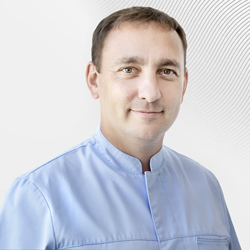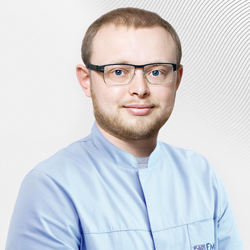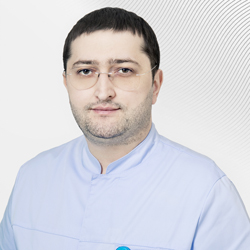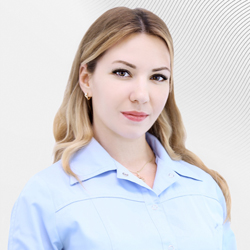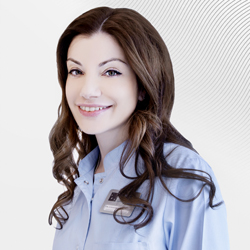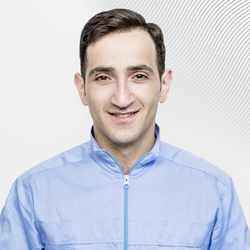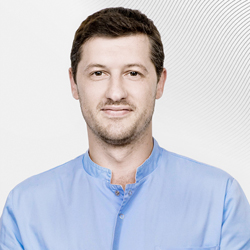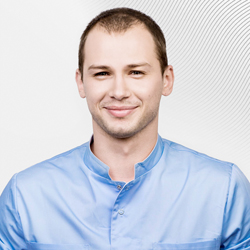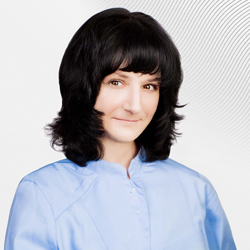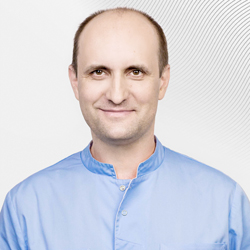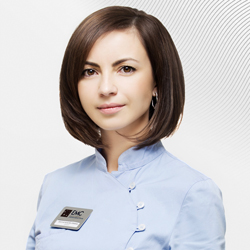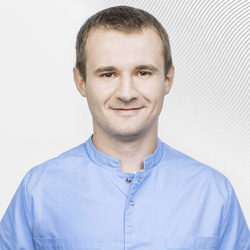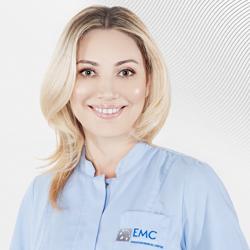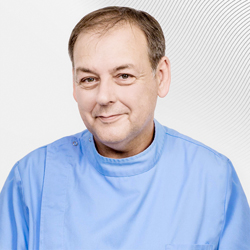The eruption of a baby's first tooth is always an exciting event in the family. However, parents tend to underestimate the importance of the first teeth. Of course, the baby teeth eventually fall out, but they are not just a temporary phenomenon. Baby teeth provide the basis for the jaw bones and muscles, and also pave the way for the molar teeth.
Teeth begin to form in a child in the womb at about the 7th-13th week of pregnancy. The first teeth usually erupt at 6-8 months of age and they grow in pairs. First there are the central incisors, then the lateral incisors, the first molars (4th in the row of milk teeth), canines, and finally at 2.5-3 years the second molars erupt (5th in the row of milk teeth). The fully-formed milk bite (the relative position of the dentition with tight closing of the upper and lower jaws) consists of 20 teeth.
Of course, these are approximate dates: teeth may occur at 1 year or at 3 months, there are children who are already born with them. This is nothing to be concerned about, the growth of teeth is individual to each child.
The reasons for delayed dentition may be a disorder of the calcium-phosphorus metabolism, reduced activity of the endocrine system, or various chronic infections. Milk teeth begin to change to permanent teeth at 5.5-6 years.
Often parents do not properly care for their baby’s oral cavity, or they misunderstand how to properly care for their child's first teeth. Because of this, certain misconceptions about baby teeth have become firmly rooted in the minds of adults.
The eruption of teeth is always accompanied by health problems in a baby. The child will have a fever, they will be very restless, stools may be affected etc.
Generally babies do not notice the teething period. Sometimes in children with weaker immune systems this physiological process is accompanied by general sickness, sleep disturbance, restless behaviour, crying, moods and increased body temperature. This is how the infant's body reacts to the stress caused by the growth of the teeth. These symptoms usually last for 2-4 days and then disappear. Fever and stool disorders may not be associated with teething, but caused by a disease which coincided with the eruption.
If the fever, stool disorders and other symptoms are quite severe, or are persistent, you should take your child to the paediatrician.
The first teeth do not necessarily require cleaning.
The teeth should be taken care of after their eruption. These days there are various tools for cleaning teeth: napkins, rubber finger cots, small toothbrushes. All these accessories can be purchased at the pharmacy. Particular attention during oral care should be paid to the base of the baby teeth at the gums, where plaque accumulates. It must be removed.
In babies that are breastfeeding their teeth should be cleaned after each feeding. At the age of 1 year old a children's toothbrush can be bought for the child with soft bristles to protect their tender gums from damage. Starting from 2 years teeth should be cleaned 2 times a day - morning and evening. The earlier the baby learns to brush their own teeth, the faster they will get into this habit and as they grow older, it will be easier for them to realise the need for daily oral care.
You should start teaching children to brush their teeth at the age of 1.5 years. At first, parents will need to help their child to brush their teeth, until they learn to do it themselves. However, you will have to monitor them for a long time, as the child will only be able to clean their teeth properly towards the age of 4-5 years. It is important to regularly show your child by example how to brush teeth properly. You must first rinse your mouth with warm water. Close your mouth and smile broadly, without opening the jaw. Now, in small circular motions brush the sides of your teeth from the cheek to the front teeth. Then open your mouth and move the brush to the chewing surfaces of teeth, moving it back and forth. In gentle sweeping movements pass over the inner surface of the teeth. Thoroughly rinse your mouth.
Your child will not need a baby toothpaste, any toothpaste will do.
Infants must have their own toothpaste, according to their age. Children's toothpaste is designed specifically for milk teeth, and its composition is different from adult toothpastes. All children's toothpastes are made with a soft gel base and do not contain abrasive elements, ie tough, aggressive microparticles, which can damage the sensitive enamel.
Do not forget that your baby may swallow the toothpaste. Toothpaste manufacturers take this into account and create a neutral compound that will not irritate the stomach if swallowed and will not cause harm to your child’s body. And most importantly, children need to like the taste of toothpaste: tooth brushing should be a pleasant experience for your child.
Children's toothpaste can be bought in the pharmacy. When purchasing toothpaste you should go by the child's age, which the toothpaste is designed for: it is shown on the packaging or on the tube. If you are in doubt and cannot understand all the products on offer, you should consult your dentist. Your doctor can help you find the right products for oral hygiene.
Baby teeth do not need to be treated, because they will drop out in any case.
If the teeth are not cleaned properly white carious spots will appear underneath the soft plaque. This initial stage of decay is reversible: with proper hygiene the stain will gradually fade. The next stage is when the defect appears: the integrity of the enamel (the outer shell of the tooth) is broken and a cavity appears in the tooth. From this moment caries begins to develop more rapidly since the dentin (the hard tissue of the tooth located under the enamel) is less dense than enamel, and it becomes difficult to clean the teeth properly.
If microorganisms get into the cavity of the tooth where the nerve passes, this will cause pulpitis - inflammation of the pulp of the tooth (the pulp consists of blood vessels and nerves), which may be accompanied by pain, but in the milk teeth is usually asymptomatic.
Pain may occur later, when the nerve has died completely and infection occurs outside the tooth - in the bone. In addition to pain, pulpitis is sometimes accompanied by swelling of the gums, fistulas (channels between the foci of the infection and the gum) and loose teeth.
The pathological process - from the appearance of a white spot to the development of inflammation outside of the tooth root - can be fast and take a few months or last for years, depending on many factors.
To avoid problems with your child’s teeth, you should visit the paediatric dentist regularly. The first appointment with the dentist should be when the child is 1.5 years old. Following on from this there should be regular check-ups every 6 months, or more frequently as directed by the doctor.
Carious teeth in children should not be filled, it is better to remove them straight away to allow permanent teeth to grow.
Baby teeth should only be removed if they are wobbling due to advancing physiological changes or if there is an underlying source of infection, the proliferation of which may affect or damage a permanent tooth bud. In these situations milk teeth must be taken out.
In other cases, dentists recommend to treat the tooth decay, because the removal of a baby tooth can cause an incorrect permanent dentition to form. If a cavity forms in the tooth, the dentist will give the baby a filling.
Do not force the issue and have your baby’s teeth removed in the hope that permanent teeth will grow faster. Extraction must be justified by a real necessity, which can only be identified by an expert.
Milk teeth should only be treated or extracted under anaesthesia.
Injection anaesthesia (anesthetic injected into the gum with a syringe) is justified in those cases where manipulation of the tooth is causing a child pain. If the nerves are not touched during treatment it is possible to do it without anaesthesia. Even when milk teeth are extracted anaesthesia is not always used, often because they are naturally well uprooted and the baby feels almost nothing.
If your child is afraid that the treatment of teeth will be painful, you should consult your doctor - perhaps for the dental procedures an anaesthetic ointment (where the gum is smeared with a special gel) will be sufficient.
The child does not need a paediatric dentist, the "adult" doctor that mum and dad go to will do just as well.
Even if your family dentist has been treating you for many years, your child still needs a paediatric dentist. Firstly, he or she will quickly put your child at ease. Secondly, all equipment, painkillers and medical materials in paediatric dentistry are designed to meet the characteristics of a child's body.
Even the environment in a paediatric department is relaxing: bright pictures on the walls, cartoons on the television and a play area where kids can play before their visit to the dentist. Everything to make a child feel comfortable. It is also important that to treat children a doctor has to have the relevant licence.
It is best to choose a doctor in advance, following the recommendations of friends and the experience of the dentist so that you do not have to look for a clinic for your baby by method of trial and error.
Silvering is the only method to treat bottle tooth decay.
Bottle tooth decay occurs in children 1-2 years old due to the consumption of sugary liquids when feeding from a bottle at night. It usually affects the central and lateral incisors of the upper jaw.
There are two options for the treatment of caries of the milk teeth - fillings and silvering. Filling children's teeth is exactly the same as in adults: all carious tissue is removed and a special filling material is placed in the cavity.
The silver method is chosen when a filling is not recommended. For example, if it is apparent that a first tooth is about to change, or if the parents or the child refuse to have the tooth filled. Silvering is not really a treatment for caries, it is more of a "retardant". The silver technique is as follows: the carious cavity is treated with a solution of silver, which allows a film to form on the surface, which in turn prevents the further deepening of the cavity.
Unfortunately, the silver only slows down the development of caries, and it may still affect the healthy parts of the tooth (on the surface or inside). After being treated with silver the teeth become blackened.
In any case, sooner or later, if a baby has caries, a filling will be needed.
Try to follow a proper hygiene routine for baby teeth in order to prevent the formation of dental caries. Visit your dentist regularly, who will be able to detect a destructive process in its early stages or conduct preventive procedures.
Baby teeth are very important for the balanced development of a child. They help your baby to learn to chew and are the foundation for his or her future permanent dentition.
That is why baby teeth require careful treatment, cleaning and to be kept in good condition.

 Write to WhatsApp
Write to WhatsApp
